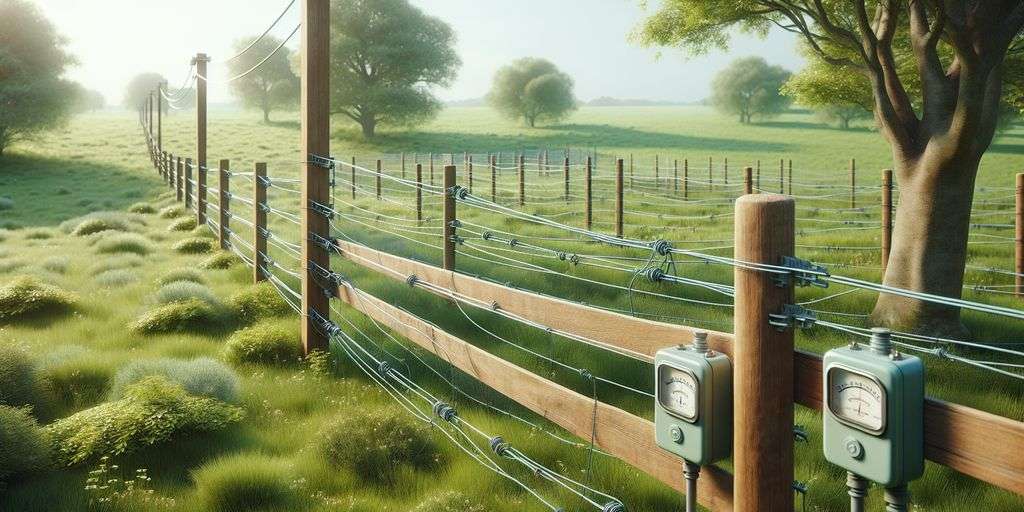Assessing the power consumption of electric fences is crucial for anyone considering their use, whether for agricultural, residential, or security purposes. This article delves into various aspects of electric fencing, including basic power requirements, cost factors, and the influence of different fence sizes and types on energy usage.
Key Takeaways
- Electric fences typically consume between 0.5 to 1 kWh per day, leading to annual costs of approximately NZ$50 to NZ$100 in New Zealand.
- The actual costs can vary significantly depending on factors such as fence size, type, and local electricity rates.
- Consulting with a local expert is recommended to get a tailored and accurate estimate of the running costs for your specific electric fence setup.
Understanding Electric Fence Power Consumption
Basic Power Requirements
To get started, you should know that a standard electric fence energiser typically consumes between 0.5 to 1 kilowatt-hour (kWh) per day. This basic understanding is crucial as it sets the foundation for estimating the broader costs and requirements of maintaining an electric fence.
Factors Affecting Consumption
Several factors can influence the power consumption of your electric fence. These include the quality and condition of the fence, the type of animals contained, surrounding vegetation, and weather conditions. Each of these elements can significantly impact the efficiency and thus the power usage of your fence.
Estimating Monthly Costs
To estimate your monthly electricity costs, multiply the daily kWh usage by the number of days in the month. For instance, if your energiser uses 0.5 kWh per day, your monthly usage would be approximately 15 kWh. Here’s a simple calculation:
- Daily usage: 0.5 kWh
- Days in month: 30
- Monthly usage: 15 kWh
This calculation will help you understand the financial implications of running an electric fence and allow you to budget accordingly.
Evaluating the Running Costs of Electric Fencing
Annual Electricity Costs
When considering the annual electricity costs of your electric fence, it’s important to note that the average consumption ranges from 0.5 to 1 kWh per day. This translates to approximately NZD $50 to $100 per year, depending on the power of your charger and the size of your fence. These costs can vary significantly based on local electricity rates and the specific setup of your fencing system.
Maintenance and Repairs
Regular maintenance and timely repairs are crucial to ensure the efficiency and longevity of your electric fence. Typical maintenance tasks include checking for vegetation near the fence lines, ensuring the charger functions correctly, and replacing worn or damaged components. The costs for these activities can add up, so it’s wise to set aside a budget for unforeseen repairs.
Cost Variability Factors
Several factors can influence the running costs of your electric fence. The type of electric fence system you choose, the geographical location, and seasonal changes are significant contributors to cost variability. For instance, a solar-powered system might offer savings in the long run despite higher initial costs. Additionally, harsh weather conditions can lead to increased maintenance needs, thus affecting your overall expenditure.
Impact of Fence Size and Type on Power Usage
Influence of Fence Size
When considering the power usage of your electric fence, the size and length are crucial factors. The larger the fenced area, the more power it requires. This is due to the need for more wiring and a more powerful energiser to maintain an effective charge over a greater distance. It’s important to plan your fence layout efficiently to minimise unnecessary extensions that could increase your power consumption.
Type of Electric Fence System
Different systems have varying energy demands. For instance, a high-tensile, multi-strand fence generally consumes more electricity than a single-strand, temporary setup. Choosing the right type of fence system based on your specific needs can significantly affect your energy usage and overall costs.
Energy Efficiency Considerations
To optimise energy efficiency, consider the power source of your fence. Options include mains power, batteries (lead-acid or dry cell), and renewable sources like solar panels. Each has its benefits and limitations, particularly in terms of installation location and maintenance needs. For remote areas, using solar panels or windmills can reduce reliance on traditional power sources, making your fence more sustainable and potentially lowering operational costs.
Conclusion
In conclusion, the running costs of an electric fence are primarily influenced by its power consumption, which typically ranges from 0.5 to 1 kWh per day. This translates to an estimated annual electricity cost of NZ$50 to NZ$100, depending on the specific conditions and setup of your fence. It is essential to consider factors such as the size and length of the fence, the type of electric fence system, and the local cost of electricity, all of which can significantly impact the overall expenses. For the most accurate assessment, consulting with a local expert is recommended to tailor the evaluation to your particular needs and circumstances.
Frequently Asked Questions
How much electricity does a standard electric fence energiser consume per day?
A standard electric fence energiser typically consumes between 0.5 to 1 kilowatt-hour (kWh) per day.
What are the estimated annual electricity costs for running an electric fence in New Zealand?
The estimated annual electricity costs for running an electric fence in New Zealand range from NZ$50 to NZ$100, depending on factors such as the size of the fence and the power of the charger.
Can the type of electric fence system affect the power consumption?
Yes, different electric fence systems have different energy requirements. For example, a high-tensile fence with several strands will likely consume more electricity than a single-strand temporary fence.





